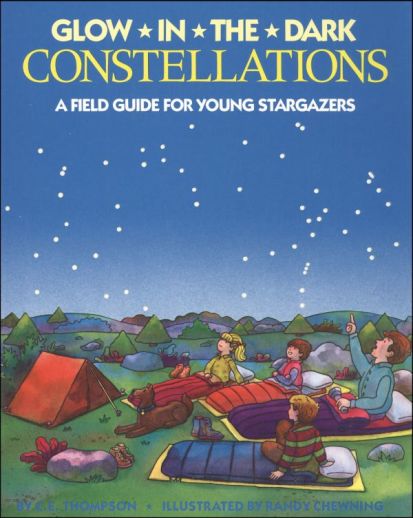We use cookies to make your experience better. To comply with the new e-Privacy directive, we need to ask for your consent to set the cookies. Learn more.
Glow-in-the-Dark Constellations: Field Guide for Young Stargazers
This field guide is quite an education in stargazing. It can be very difficult to pick out the constellations, or to find certain stars, if you have an untrained eye - so open this book and start that training. In the introduction, readers get background on who named the constellations, what stars are, why constellations move, and some tips to make your stargazing more fruitful. The rest of the book is divided into five sections to show the constellations which can be seen year-round, in winter, spring, summer, and autumn. In each of these sections, the stories behind the names are told, the best time of year to view them is revealed, and step-by-step directions for finding them are included. The page opposite all of this is a picture of the sky with glow-in-the-dark stars showing the position of the constellation. The book contains eight glow-in-the-dark maps of the northern and southern hemispheres in all four seasons. In all, there are 19 glow-in-the-dark maps of the stars and constellations. A useful tool for training your eye to see more than just a sky full of dots. ~ Zach
Covers human body, Louis Pasteur, weather, stars, matter, acid and bases, and energy.
Required resources for Younger Students (gr. 1-3) include:DK First Human Body Encyclopedia, Chemistry: Getting a Big Reaction (Basher Science), and the DK Children's Encyclopedia .
Older student (gr. 4-5)required resources include: Usborne Science Encyclopedia (choose hard or soft cover), and the Kingfisher Science Encyclopedia.
All students will need: Glow in the Dark Constellations and Pasteur's Fight Against Microbes.


It is a required resource for our Elemental Science Chunks Year B Curriculum
My son needs something to entertain him while he has quiet time before bed and he is a bit afraid of the dark and not being able to see.
This is a portion of the first grade home school curriculum selected.
For Elemental Science -Earth Science